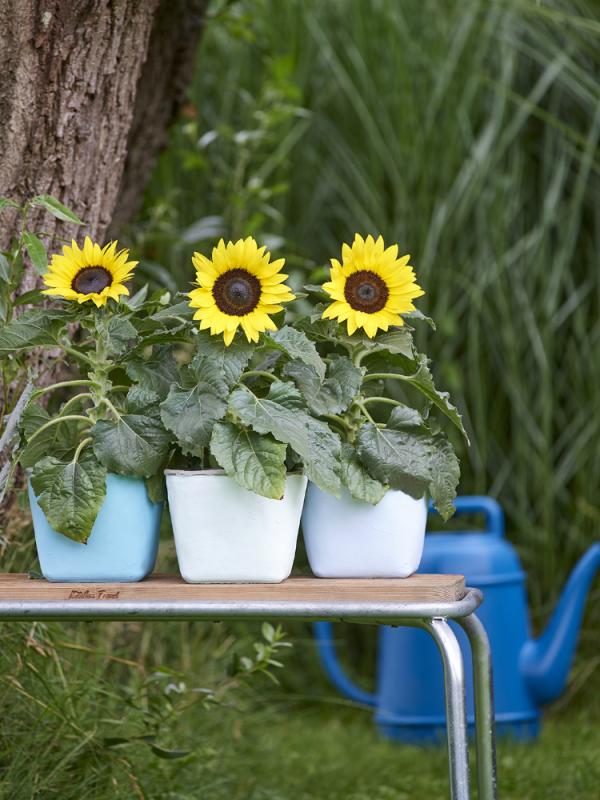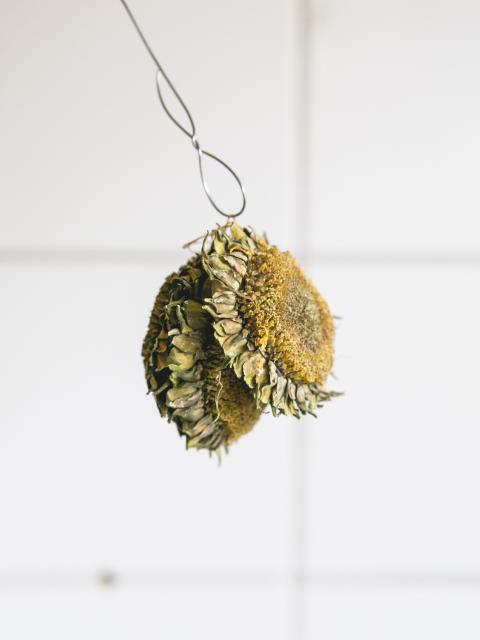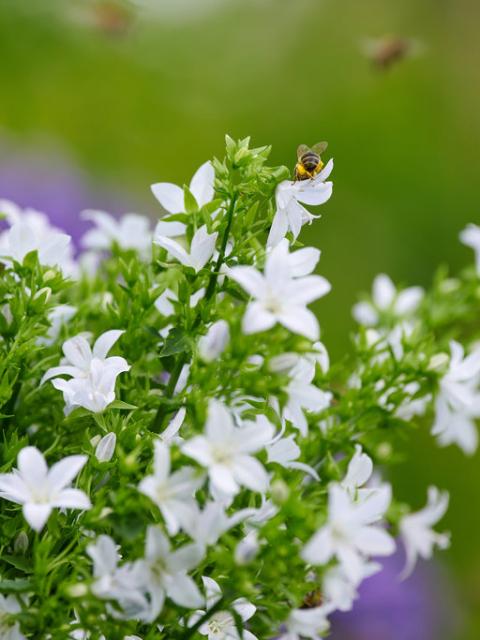With a sunflower (official name: Helianthus) you always have sunshine nearby. It’s a sizeable plant which can reach a height of between one-and-a-half and three metres, although there are also smaller species. The coarse-haired stem is crowned with one or more impressive flowers which can have a diameter of some 60 cm. They all have a dark heart, surrounded by petals as a radiant fringe. Most sunflowers are yellow, but there are also orange, russet and bicoloured varieties. Sunflowers bloom from July until October, and get a lot of interest from birds and bees, which creates a cheerful buzz in your garden. if you leave the exhausted flowers on the ground the birds will enjoy them for months as an autumn and winter buffet.
Origin
The sunflower originates from North and South America. They were already being cultivated there in small fields 1000 years B.C. for their edible seeds. The petals were used as cattle food. Sunflowers and their seeds were brought to Europe by Spanish sailors in 1530. Nowadays sunflowers bloom virtually anywhere in a moderate climate. The greatest density of sunflowers can be found north of the Black Sea.
Trivia
-
Even when the sunflower’s bud is still closed, it follows the sun on sunny days and turns back to the east at night. We call this heliotropism.
-
Sunflowers are particularly grown to produce sunflower oil. This contains linoleic acid, which is good for cholesterol levels in the blood.
-
The Incas worshipped the flowers as a symbol of their sun god.
-
The series of still-lives with sunflowers which Vincent van Gogh painted in 1887 and 1889 are amongst the world’s most famous works of art. The field of sunflowers that inspired him most was near Arles in France.
-
Sunflowers are known for their symmetry, based on Fibonacci numbers (perfect numbers) and the Golden Ratio (perfect mathematical proportions).











